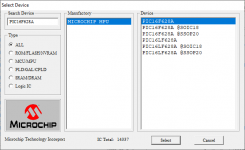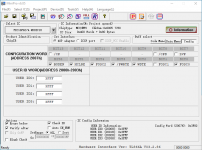Forgive me if this is the wrong place to post.
I've been meaning to learn how to program PICs and thought this would be a cool starting point since it is tested code and well documented flags. Since I saw a couple of people mention success with a PICKIT 2, I picked up the current model (4) and a few of the chips. First problem: MP-LAB does not accept *.bin files. If I knew what software created the bin, maybe I could back out the compiled *.hex binary?
Does anyone have advice? Thanks.
I've been meaning to learn how to program PICs and thought this would be a cool starting point since it is tested code and well documented flags. Since I saw a couple of people mention success with a PICKIT 2, I picked up the current model (4) and a few of the chips. First problem: MP-LAB does not accept *.bin files. If I knew what software created the bin, maybe I could back out the compiled *.hex binary?
Does anyone have advice? Thanks.





 cable boxes it took longer to get a reliable connection in the tsop socket adapter than to actually lift and re-solder the chip.
cable boxes it took longer to get a reliable connection in the tsop socket adapter than to actually lift and re-solder the chip.
